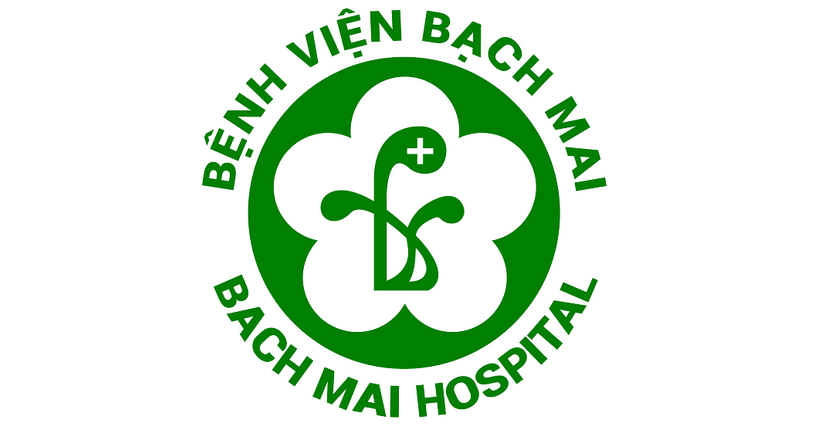Bệnh viện bạch mai * Bach Mai Hospital
Tạp chí Y học lâm sàng * Journal of Clinical Medicine
Website : www.jocm.vn Email : jocm@bachmai.edu.vn Phone : +84947040855
Peripheral blood oxygen saturation (Spo2) value in the diagnosis of congenital heart disease in newborns at the Pediatric Center, Bach Mai Hospital
- Mã bài báo : 12.EN.0113
- Ngày xuất bản : 30/11/2023
- Số trang : 93-100
- Tác giả : Nguyen Thanh Nam
- Lượt xem : ( 676 )
https://doi.org/10.52322/jocmbmh.12.en.0113
ABSTRACT
Introduction: Pulse oximetry has been suggested as a screening test for congenital heart disease (CHD) in asymptomatic newborns. However, routine pulse oximetry testing in newborns before discharge from the hospital has not been evaluated.
Objective: To evaluate pulse oximetry as a screening test for critical congenital heart disease (CCHD) in newborns admitted to the Pediatric Center at Bach Mai Hospital.
Methods: We conducted a cross-sectional study of newborns between November 2020 and November 2021. Pulse oximetry was measured upon admission to the Pediatric Center, and a Doppler echocardiogram was performed on all newborns. Cases with oxygen saturation <95% and a difference of >3% between the right hand and right leg were compared to other cases.
Results: Out of 707 newborns screened, 101 had cardiac abnormalities, including: patent ductus arteriosus (62.4%), atrial septal defect (13.9%), ventricular septal defect (11.8%), Ebstein anomaly (2.9%), mild-moderate coarctation of the aorta (2.0%), and mild-moderate pulmonary valve stenosis (1.0%). Upon admission, 43.8% of newborns with CHD had a right hand-right leg difference >3%. Admission pulse oximetry had a specificity of 74.1%, corresponding to a negative predictive value of 88.7%. Similarly, in the severe disease group, admission pulse oximetry had a sensitivity of 80% and a specificity of 71.8% with a negative predictive value of 99.8%.
Conclusions: Abnormal pulse oximetry has a high sensitivity for detecting severe CHD. The negative predictive value of pulse oximetry for severe CHD is very high. Abnormal pulse oximetry suggests a high probability of CHD, but normal pulse oximetry does not exclude CHD and needs to be combined with evaluation for abnormal clinical signs.
Keywords: SpO2, Congenital heart disease, newborn
Citations:
APA: Nguyen Thanh Nam, Le Dieu Linh, Pham Thi Mai, Nguyen Huu Hieu, & Pham Van Dem. (2023). Peripheral blood oxygen saturation (Spo2) value in the diagnosis of congenital heart disease in newborns at the Pediatric Center, Bach Mai Hospital. Journal of Clinical Medicine, 1(12), 93-100.
AMA: Nam NT, Linh LD, Mai PT, Hieu NH, Dem PV. Peripheral blood oxygen saturation (Spo2) value in the diagnosis of congenital heart disease in newborns at the Pediatric Center, Bach Mai Hospital. J Clin Med. 2023;1(12):93-100.
MLA: Nam, Nguyen Thanh, et al. "Peripheral Blood Oxygen Saturation (Spo2) Value in the Diagnosis of Congenital Heart Disease in Newborns at the Pediatric Center, Bach Mai Hospital." Journal of Clinical Medicine, vol. 1, no. 12, 2023, pp. 93-100.
Vancouver: Nam NT, Linh LD, Mai PT, Hieu NH, Dem PV. Peripheral blood oxygen saturation (Spo2) value in the diagnosis of congenital heart disease in newborns at the Pediatric Center, Bach Mai Hospital. J Clin Med. 2023;1(12):93-100.
Download Citations:
- DOI : 10.52322/jocmbmh.12.en.0113
- Chủ đề : Pediatric
- Loại bài báo : Original Research
- Chuyên nghành : Clinical Medicine
 Thông tin liên hệ : Nguyen Thanh Nam
Thông tin liên hệ : Nguyen Thanh Nam Email : bsntnam@gmail.com
Email : bsntnam@gmail.com Địa chỉ : Pediatric Center, Bach Mai Hospital
Địa chỉ : Pediatric Center, Bach Mai Hospital
- Từ khóa :
- SpO2
- Congenital heart disease
- newborn
Bài báo liên quan
- The care needs of patients with alcohol withdrawal on days 1 and 7 of treatment at the National Institute of Mental Health
- Peripheral blood oxygen saturation (Spo2) value in the diagnosis of congenital heart disease in newborns at the Pediatric Center, Bach Mai Hospital
- Hand hygiene compliance among health care workers and associated factors at the ICU – Poison Control Center, Bach Mai Hospital
- Comparison of speckle tracking echocardiography (STE) parameters with other 2-dimensional echocardiographic ones in patients before and after cardiac resynchronization therapy (CRT) device implantation
- The satisfaction of aesthetic outcomes after skin graft in traumatic soft tissue defect patients and related factors at the Aesthetic and Plastic surgery Department, Hanoi Medical University Hospital
- Evaluation of the left ventricular function of patients with severe heart failure before and after implantation of cardial resynchronization (CRT) devices using Speckle tracking echocardiography (STE)
- Evaluating the associations between embryo morphokinetics and results of pre-implantation genetic testing
- Factors associated with rehabilitation care outcomes for post-acute stroke patients
- Used of covered stent in the treatment of aortic coarctation and concurrent patent ductus arteriosus in a symptomatic adult
- Psychogenic vomiting: A case report
- Anti-N-methyl-d-aspartate encephalitis after SARS-CoV-2 infection: A case report and literature review
- Granuloma with polyangitis: A case report at Bach Mai Hospital and review of literature
- Utilizing Time-lapse microscopy to optimize embryo selection in in-vitro fertilization
- Missed opportunities for vaccination in healthcare settings: A review of literature
Bài viết mới nhất
- Tạp chí YHLS BVBM được phê duyệt mức điểm 0,75 trong Danh mục tạp chí khoa học được tính điểm năm 2024 của HĐGSNN
- Thư mời gửi bản thảo cho số tiếng Anh năm 2023 của Tạp chí Y học lâm sàng
- Chúc mừng Ngày Báo chí Cách mạng Việt Nam 21/06
- Giải thưởng Đặng Văn Chung: Tôn vinh giá trị sáng tạo và Nghiên cứu khoa học
- Quy định về định dạng bài báo theo định dạng chuẩn quốc tế

 File toàn văn
File toàn văn



